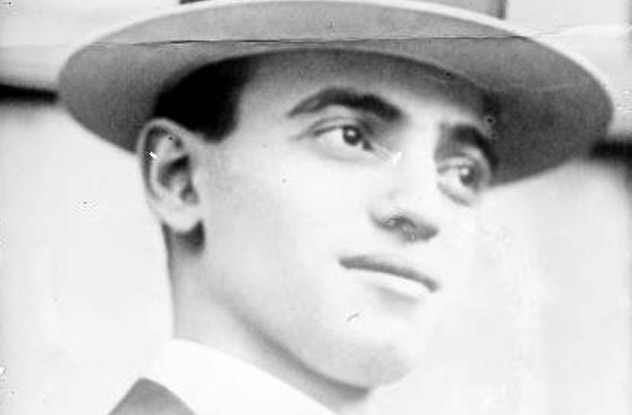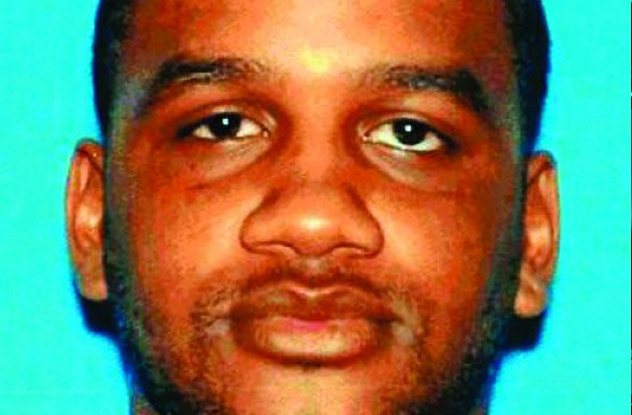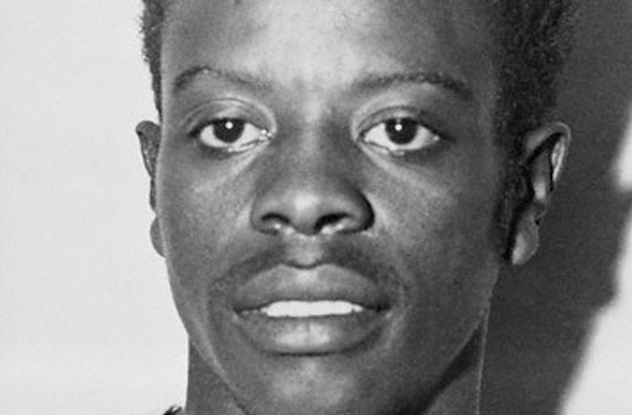 Technology
Technology  Technology
Technology  Humans
Humans 10 Everyday Human Behaviors That Are Actually Survival Instincts
 Animals
Animals 10 Animals That Humiliated and Harmed Historical Leaders
 History
History 10 Most Influential Protests in Modern History
 Creepy
Creepy 10 More Representations of Death from Myth, Legend, and Folktale
 Technology
Technology 10 Scientific Breakthroughs of 2025 That’ll Change Everything
 Our World
Our World 10 Ways Icelandic Culture Makes Other Countries Look Boring
 Misconceptions
Misconceptions 10 Common Misconceptions About the Victorian Era
 Mysteries
Mysteries 10 Strange Unexplained Mysteries of 2025
 Miscellaneous
Miscellaneous 10 of History’s Most Bell-Ringing Finishing Moves
 Technology
Technology Top 10 Everyday Tech Buzzwords That Hide a Darker Past
 Humans
Humans 10 Everyday Human Behaviors That Are Actually Survival Instincts
 Animals
Animals 10 Animals That Humiliated and Harmed Historical Leaders
Who's Behind Listverse?

Jamie Frater
Head Editor
Jamie founded Listverse due to an insatiable desire to share fascinating, obscure, and bizarre facts. He has been a guest speaker on numerous national radio and television stations and is a five time published author.
More About Us History
History 10 Most Influential Protests in Modern History
 Creepy
Creepy 10 More Representations of Death from Myth, Legend, and Folktale
 Technology
Technology 10 Scientific Breakthroughs of 2025 That’ll Change Everything
 Our World
Our World 10 Ways Icelandic Culture Makes Other Countries Look Boring
 Misconceptions
Misconceptions 10 Common Misconceptions About the Victorian Era
 Mysteries
Mysteries 10 Strange Unexplained Mysteries of 2025
 Miscellaneous
Miscellaneous 10 of History’s Most Bell-Ringing Finishing Moves
10 Controversial Cases Of Vigilantism
Some of the most popular characters in fiction are individuals who take the law into their own hands. When the legal system isn’t working, it’s easy to identify with a heroic vigilante who decides to fight crime on their own and seek justice on those who have done wrong. However, in real life, the issue of vigilantism is a lot more complex. While some vigilantes are sympathetic figures, others go too far in their desire for revenge. In some cases, completely innocent people wind up losing their lives. Whatever the circumstances, whenever vigilantism takes place, it’s sure to be surrounded by controversy.
10 Bernhard Goetz

One of the most popular vigilante films of all time is Death Wish. Charles Bronson plays an ordinary New Yorker who responds to his city’s escalating crime rate by shooting every mugger he encounters. On December 22, 1984, New York City was treated to a real-life Death Wish story after Bernhard Goetz, a 37-year-old electronics specialist, was accosted by four young African-American men on a Manhattan subway train. After the four allegedly tried mugging him, Goetz pulled out a.38-caliber Smith & Wesson revolver and fired five shots into them.
Even though they all survived their wounds, one of the men, Darrell Cabey, was paralyzed. Goetz reportedly shot Cabey once, and then said, “You don’t look so bad, here’s another,” before firing a second bullet.
Goetz fled the state for several days before he decided to turn himself in. He claimed he’d shot the men not just to defend himself but because he’d been denied proper justice when three other youths mugged and assaulted him three years earlier.
Charged with four counts of attempted murder and assault, Goetz was dubbed “The Subway Vigilante” by the New York media. Since Goetz was white and his victims were black, the case generated much controversy. Goetz was eventually acquitted on all the attempted murder and assault charges and only wound up serving eight months in jail for one count of carrying an unlicensed firearm. Years later, however, Cabey filed a civil suit against Goetz, and a jury awarded him $43 million.
9 Leo Frank

When 13-year-old Mary Phagan was discovered strangled in an Atlanta pencil factory on April 27, 1913, factory owner Leo Frank became the primary suspect. Frank had recently laid Phagan off from her job, and it the public theorized that he’d killed her for resisting his romantic advances. Frank was charged with the murder and sentenced to death via hanging, but he maintained his innocence and appealed the verdict.
Frank was scheduled to hang in June 1915, but one day before his execution, the Governor of Georgia decided to commute his sentence to life imprisonment. On the evening of August 16, 25 men formed a lynch mob, calling themselves the “Knights of Mary Phagan.” They stormed Milledgeville State Penitentiary, kidnapped Frank and took him near Phagan’s home in Marietta. The next morning, they hanged him from a tree.
Several decades later, a witness confirmed Frank’s innocence by claiming he’d seen Jim Conley, a janitor who testified against Frank, carrying Phagan’s body into the basement. Leo Frank finally had his name cleared in 1986 when the Georgia State Board of Pardons and Paroles granted him a posthumous pardon.
8 Gary Sellers & Robert Bell

In August 2007, 53-year-old Timothy Chandler from Helenwood, Tennessee was arrested and charged with possession of child pornography. He received five years’ probation and had to register as a sex offender but was then released on bond. Two of his neighbors, Gary Sellers and Robert Bell, decided they didn’t want a pedophile in their town. So they decided to scare him away—by setting his home on fire.
Another neighbor rushed in to drag Chandler out of the burning house, but his wife, Peggy, stayed trapped inside. Chandler ran back in to rescue her, but she died in the blaze. In the end, Sellers and Bell had inadvertently killed a completely innocent woman.
Bell pleaded guilty to second-degree murder and aggravated assault and was sentenced to 25 years in prison. Sellers entered guilty pleas for the facilitation of second-degree murder and facilitation of arson, receiving two concurrent 12-year sentences.
7 Santos Ramos
Though lynch mobs are no longer a common sight in North America, they still dispense vigilante justice regularly in, say, the more isolated areas of Bolivia. In fact, because many of these areas do not have much police presence, the Bolivian government passed a bill in 2009 giving indigenous groups the legal right to administer their own justice systems.
In June 2013, when a rural Quechua village learned 17-year-old Santos Ramos had raped one of its residents, the locals decided to get their own form of revenge. A mob of approximately 200 villagers captured Ramos, bound him, and took him to the victim’s funeral. The woman, Leandra Arias Janco, was about to be laid to rest when the mob threw Ramos right into the open grave.
Police tried to intervene, but residents blocked the way and prevented authorities from reaching the burial site in time. In the end, Santos Ramos wound up buried alive, dying a horrible death beneath his victim.
6 Thomas Thurmond & John Holmes
Brooke Hart was the 22-year-old son of Alexander Hart, the wealthy owner of a prominent department store in San Jose, California. On November 9, 1933, two amateur criminals kidnapped him and demanded $40,000 from the Hart family for his return. Police arrested one of the kidnappers, Thomas Harold Thurmond, at the ransom drop, and the man soon gave up his accomplice, John M. Holmes. He also revealed that the two of them had bound Brooke with wire and tossed him off the San Mateo Bridge.
Holmes was soon arrested and also confessed to the crime, and both he and Thurmond were held at the Santa Clara County Jail in San Jose.
Brooke Hart’s body was discovered in San Francisco Bay on November 26. By this time, rumors had spread that Thurmond and Holmes would plead not guilty by reason of insanity, and an angry mob formed outside the Santa Clara County Jail. Throughout the day, the media announced that a lynching was going to take place in nearby St. James Park, and thousands of people gathered there by nightfall. Governor James Rolph even stated that he would not call in the National Guard and would pardon anyone who participated in the lynching.
By midnight, the huge crowd overwhelmed police and dragged Thurmond and Holmes out of their cells. The mob took them to St. James Park and hanged them as advertised. The lynching was even broadcast live on one Los Angeles radio station. It remains one of the largest public displays of vigilantism in history.
5 Michael Mullen

In 2005, three registered sex offenders—Hank Eisses, Victor Vazquez, and James Russell—were living together as roommates at a house in Bellington, Washington. All three of them had served time in prison for sexually abusing children. On the evening of August 26, they were surprised to see a man wearing an FBI baseball cap knocking on their door. He claimed to be an FBI agent and told them that he was investigating vigilante threats against registered sex offenders. After they let the agent into the house, Russell left to go work, but when he returned later that night, he was shocked to discover that Eisses and Vazquez had both been shot to death, execution-style.
The killer soon sent letters to the police and media. He said he planned to kill more sex offenders who had abused children and that he’d only spared Russell’s life so he could spread the word about his actions. However, on September 5, this killer phoned police and made arrangements to turn himself in.
The culprit was a 35-year-old ex-con named Michael Mullen, who had previously served time for such petty crimes as theft and check fraud. Mullen had been molested by a neighbor when he was in elementary school and had lived a very troubled life. He claimed his vigilantism was inspired by the horrific crimes of one specific sex offender, Joseph Edward Duncan III. Duncan had recently murdered an Idaho family and kidnapped the two youngest children as sex slaves. This particular offender, as it turned out, needed no vigilante justice. He was sentenced to 44 years at the Stafford Creek Corrections Center and committed suicide in his cell in 2007.
4 Prell Gilton & Lupe Mercado

In 2012, a Los Angeles couple named Barry Laprell “Prell” Gilton and Lupe Mercado were horrified to discover a photograph of their 17-year-old daughter, Alicia, in some escort ads. Alicia had left home the previous year and was romantically involved with a 22-year-old Compton gang member named Calvin Sneed. Calvin, the couple would learn, had pushed their daughter into a life of prostitution and was functioning as her pimp.
The couple reached out to the authorities and added Alicia to several missing and exploited children’s registries, but they received very little help. However, Calvin Sneed’s control over Alicia ended in the early morning hours of June 4 when he was shot to death inside his vehicle with a.40-caliber weapon.
Police suspected Prell and Lupe. Prell had allegedly previously tried and failed to shoot Calvin just the previous month. Police soon arrested both him and Lupe, along with two others— Prell’s cousin Antonio and another man, Alfonso Williams, for providing the murder weapon and participating in the shooting. People still debate whether the couple is innocent or if their vigilantism was justified, but all four suspects have been indicted on federal charges of murder and racketeering and are currently awaiting trial.
3Mack Charles Parker

By the 1950s, lynch mob violence had sharply declined in the United States, but there some racially-motivated acts of vigilante justice continued.
On February 23, 1959, a pregnant white woman named June Walters was waiting in her car with her four-year-old daughter on a dirt logging road in Pearl River County, Mississippi. The car had broken down and Walters’s husband had gone to get help when a 23-year-old African-American man named Mack Charles Parker allegedly arrived at the scene. He proceeded to abduct the two at gunpoint before raping Walters. The next day, the father of one of Parker’s friends phoned the police, and Parker was arrested.
Walters identified him as the perpetrator. However, no other evidence connected him to the crime, and Parker took a series of lie detector tests which provided no other support. Parker pleaded not guilty to one count of rape and two counts of kidnapping and was held at the Pearl River County Courthouse to await trial.
Shortly after midnight on April 25, a mob of eight to ten people came to the prison. They didn’t need to storm the facility—a deputy sheriff let them enter and approach Parker’s cell. They proceeded to abduct Parker and drive him to the Pearl River Bridge. He was shot twice in the chest and weighed down with chains before being tossed off the bridge into the river.
An FBI investigation would uncover the names of all the participants in the lynching, but the local authorities refused to indict them. Debate still rages on about whether Parker was actually an innocent man. In 2009, the FBI decided to re-open the investigation.
2 Ken McElroy

In the small town of Skidmore, Missouri, no citizen was more feared and hated than local bully Ken McElroy. Over the course of several years, McElroy was suspected of numerous crimes and had charges brought against him 21 times. However, on nearly every occasion, McElroy would intimidate witnesses scheduled to testify against him and managed to avoid conviction.
In 1973, a 14-year-old girl named Trena McCloud gave birth to McElroy’s child. She went to live with him, and when she later fled to her mother’s home, McElroy shot their family dog and burned down the house. McElroy was indicted for assault, arson, and statutory rape, but then something happened that forced authorities to drop the charges: Trena agreed to marry McElroy. She did so because he threatened to burn down her mother’s new home as he had the old one.
In 1980, McElroy was charged with attempted murder when he shot an elderly grocer in the neck. He was finally convicted at trial but was freed on bail pending an appeal. After McElroy threatened to go after the victim, the citizens of Skidmore decided to band together and finally put the man down.
On July 10, 1981, McElroy left a local bar and climbed into his pickup truck when he was shot several times and killed. Even though Trena was sitting in the truck and a crowd of approximately 46 witnessed the shooting, no one called for an ambulance. While Trena did identify a gunman, no other witnesses admitted to seeing anything. And even though the local sheriff had advised the residents not to take any action against McElroy, he conveniently drove out of town shortly before the murder took place.
To this day, no charges have ever been filed and Skidmore continues to remain silent about Ken McElroy’s murder.
1 Andre Bamberski
14-year-old Kalinka Bamberski originally hailed from France, but she spent the summer of 1982 in Lindau, Germany with her mother and with her stepfather, Dr. Dieter Krombach. On the evening of July 9, Krombach injected Kalinka with a drug called Kobalt-Ferrlecit, which he claimed treated anemia. According to Krombach, he found Kalinka dead in her bed the next morning.
When an autopsy could not determine the cause of death, Kalinka’s father Andre became suspicious and decided to investigate further. He eventually concluded that Krombach had injected Kalinka in order to rape her, but she died after a negative reaction to the drug. Andre pressed for an indictment against Krombach, but the German courts determined there was insufficient evidence.
In 1995, Andre successfully lobbied to have Krombach tried in absentia in France, where he was convicted of involuntary manslaughter and given a 15-year sentence. Two years later, at a separate trial in Germany, Krombach confessed to drugging and raping a 16-year-old patient. He received a two-year suspended sentence and lost his medical license. In 2001, Krombach’s manslaughter verdict was annulled by the European Court of Human Rights and all attempts to get him extradited to France for another trial were denied.
The case was officially closed, but in 2009, Andre hired three men to abduct Krombach from his hometown in Germany. They took Krombach to Mulhouse, France and left him chained to a fence near a police station. In spite of Germany’s demands to return Krombach, he finally stood trial for involuntary manslaughter. After other victims testified that Krombach had injected them with drugs to rape them, he was sentenced to 15 years in prison.
Robin Warder is a budding Canadian screenwriter who has used his encyclopedic movie knowledge to publish numerous articles at Cracked.com. He is also the co-owner of a pop culture website called The Back Row and recently worked on a sci-fi short film called Jet Ranger of Another Tomorrow. Feel free to contact him here.








